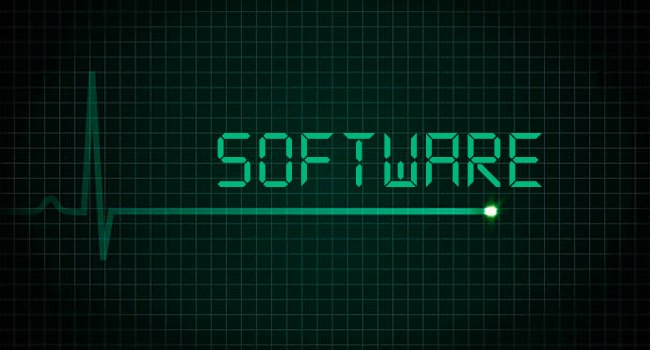Understanding and Preparing for End-of-Service Life (EOSL)

With the speed with which technology evolves these days, IT hardware is phased out much faster than organisations would prefer. Servers, routers, and console managers—all part of a data center’s infrastructure, need to be working efficiently at all times to ensure continued business operations.
No equipment is expected to last forever, though. Regardless of how good the quality of your equipment is, how diligently you’ve maintained it with IT support London services (for UK-based enterprises), or how well it fits with the rest of your network, there will come a time when your device will reach this stage of its IT lifecycle—the End-of-Service Life (EOSL).
What is EOSL?

End-of-Service Life or EOSL is the time when the Original Equipment Manufacturer (OEM) will cease to offer maintenance or support service for a particular product line. While some OEMs may opt to give continued maintenance services for some popular devices, these are available at exorbitantly high rates. The EOSL may come within six to twelve years of product release.
End-of-Life (EOL) and How It Differs from EOSL

A different but closely-related stage (with the terms often used interchangeably) in the IT product lifecycle is End-of-Life or EOL. EOL is when the manufacturer announces the end of production for a certain device. Along with this, the manufacturer will also stop marketing and selling said product.
EOL comes before EOSL and usually, within three to six years from the launch of a product. Software maintenance services for devices that have reached EOL will continue to be given by the OEM for the next few years, up until EOSL. When this happens, a company has the option to acquire refurbished versions and spare parts of the device from third-party suppliers.
What Then After EOSL?

Now while both End-of-Life and End-of-Service Life are causes for concern for affected businesses, they can generally continue with normal operations without any major disruption once EOL is reached. As mentioned previously, there are many third-party maintenance (TPM) providers who keep an inventory of IT hardware and their essential parts—and at significantly lower prices at that—long after a product has been discontinued.
The more popular a particular equipment is, the more refurbished products and replacement parts of that model there would be available in the secondary market. By the time a device is no longer carried by TPM suppliers, most organisations would have then done a technology refresh and upgraded to newer hardware.
With EOSL however, carrying on ‘business as usual’ is harder to achieve. This could be due to either or both of these scenarios:
-
Support services would be steeply-priced. While OEMs may increase support prices after EOL is announced, they could still opt to keep the same rates and allow companies to enjoy these rates until EOSL is reached. Beyond EOSL however, manufacturers could simply stop offering technical support, or continue to offer them at too-high prices, these would prove to be prohibitive for most organisations. That is, if they even have this option at all.
-
Product firmware would be outdated. The stoppage of tech support services when the EOSL stage is reached means the manufacturer also has no intention of updating the product’s firmware. If you’re not keeping track of the EOSL dates of your IT equipment, you could overlook important updates such as security patches and end up leaving the organisation’s network open to security risks.
These developments could significantly affect the smooth flow of data center operations because tech support services including maintenance upgrades and security fixes are vital to any business equipment. You’d be compelled to upgrade your equipment or look for an IT support London team (for UK companies) for alternative tech services.
To be fair, OEMs give out the announcements for both EOL and EOSL well ahead of time so that enterprises won’t be caught ill-equipped to deal with the fallout. So what moves should you make to prepare for these eventualities?
Preparing for EOSL: 5 Key Things to Do

If you have some IT equipment that are nearing EOSL, here are steps that you can do to avoid unwanted disruptions.
-
Check your hardware timelines. If you don’t know the EOL and EOSL dates for your business hardware, then that’s the first thing that you need to find out. Keep close track of these dates so you have aple time to make important decisions when EOL is reached and especially before the EOSL date.
-
Talk to your OEM. Find out if the manufacturer will continue to provide technical support for the equipment beyond EOSL, and if so, what support services are offered and at what rates.
-
Explore third-party options. If there is nothing to expect from the manufacturer after EOSL, then look around for third-party maintenance offerings. TPM suppliers provide refurbished devices, hardware replacement parts, and technical support for multiple hardware OEMs, and hence, are considered the go-to providers for enterprises looking to maximise the use of their equipment even past EOL and EOSL dates.
-
Take costs into consideration. Compare the costs for subscribing to high-priced OEM tech support after EOSL to utilising TPM services for parts and maintenance services. Consider that if you go with the OEM (if available), you would have to pay tech support for each device, whereas a TPM can carry different hardware brands and models under a single maintenance contract.
-
Create a timetable for tech upgrade. While there are ways, utilising your equipment past EOSL can only work for a good number of years before the device totally gets outdated. Work out plans and resources for upgrading your equipment even while maximising the use of your current hardware.
Having a good understanding of EOSL in the IT lifecycle and knowing what potentially happens beyond that is important to informed decision making. Whether you choose to work with a TPM supplier and/or IT support London provider, or do a technology refresh of your hardware, prepare ahead of time to ensure continuity of smooth, efficient, and secure data center operations.
Related Posts
By accepting you will be accessing a service provided by a third-party external to https://www.htl.london/